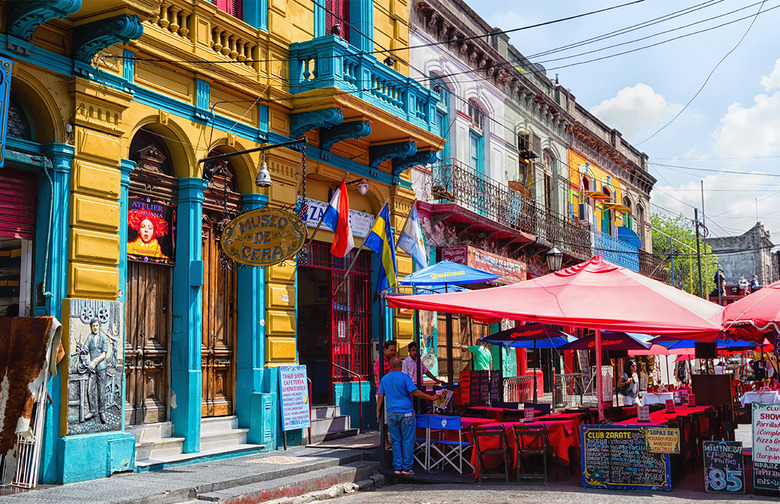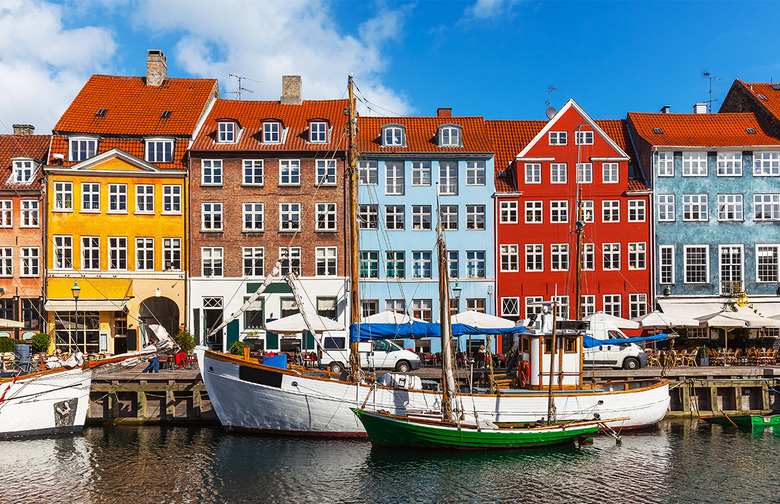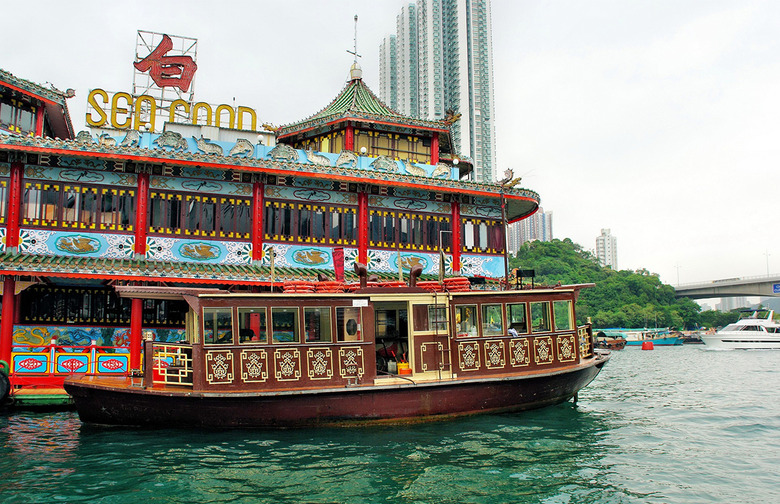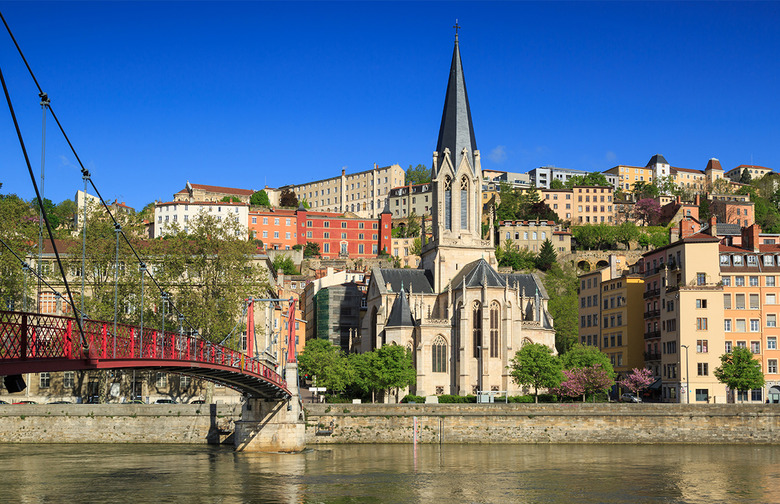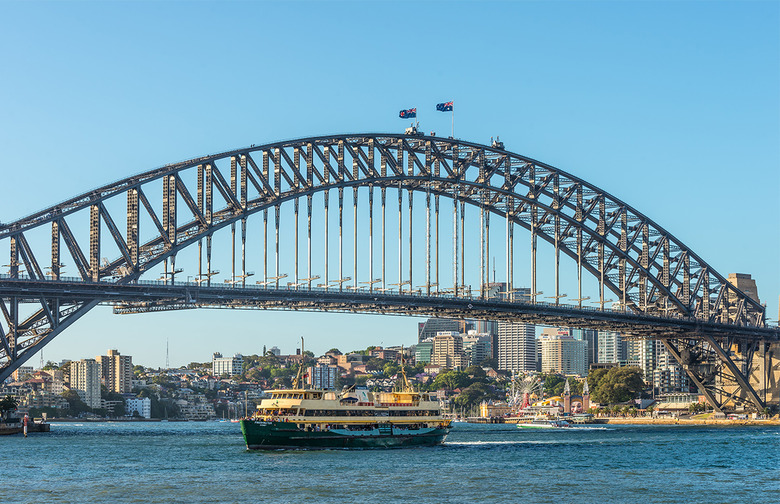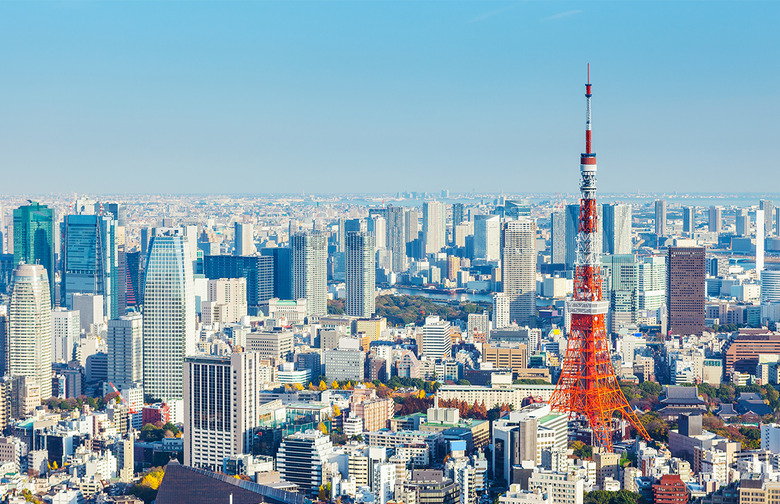Best Study-Abroad Locations For Food Lovers (Slideshow)
Ah, Barcelona. Madrid may be marvelous, but skip the landlocked life and opt for Spain's famous city by the sea instead. Not only will the scenery be better, but so will the food. Some of Spain's best restaurants are in Barcelona (like Albert Adrià's Tickets) or are at least nearby (like El Celler de Can Roca in Girona, about an hour-and-a-half up the coast, often named as one of the best restaurants in the world), and the city streets are filled with more modest places where you can dine on perfect tapas and seafood fresh from the Mediterranean and wash it all down with a glass or three of Catalan wine. On the educational side, the city is also home to the Picasso Museum, the Museu Frederic Mares, and the Centre d'Art Santa Mònica, among many other cultural institutions. Barcelona is also routinely named one of the safest cities in the world.
Buenos Aires
For those who took Spanish back in middle and/or high school (which is probably everyone other than me, because my mom insisted that "French sounds prettier"), Spain is a great study abroad destination...except for the fact that it's usually everyone's first choice. Instead, opt for South America — specifically the Argentinian capital of Buenos Aires, which is probably as close to Europe as you'll get, appearance-wise at least, in the Western (and Southern) Hemisphere. The architecture is beautiful, the exchange rate is favorable (USD $1 = .068 Argentine pesos), the nightlife is poppin', and the food is phenomenal. Need convincing of that last fact? Just look at our list of the 101 Best Restaurants in Latin America and the Caribbean 2016, specifically the 10 entries from Buenos Aires alone.
Oh yeah, and you'd be wise to study abroad in the winter semester, since it will be summer in Argentina, and you can virtually rub that fact in everyone's faces back home via Instagram.
Copenhagen
Denmark's capital city is often cited as one of the most expensive cities in the world, but there are a few other aspects for which Copenhagen occasionally gets top billing. It is often named as one of the friendliest cities, happiest cities, most equal cities, best cities for healthcare, and best for education, too. That's what you're there for, after all. Of course the food is often praised as well (that's what we're there for), with its fresh seafood, scrumptious smørrebrød, and one of the best restaurants in the world, Noma (which, as you may have heard, will close in December 2016; however, it's slated to reopen as an urban farm in 2017). Somewhat surprisingly, a total of 22 restaurants in the city have Michelin stars. Of course, most of these fit under the aforementioned "expensive" part of Copenhagen, so maybe grab a couple Danish-style hot dogs from Harry's Place instead. It is routinely voted as the best eatery in the city by locals. As a bonus, some 86 percent of people in Denmark can speak a passable amount of English, which should make everyday life in Copenhagen even better.
Click here to see 9 other countries that have a suprising amount of English speakers.
Hong Kong
The food in China can be excellent, but sometimes it ends up seeming a bit too uniform, even when comparing the different provinces. Instead, head to Hong Kong, where you get all that wonderful food (like pork buns, steamed dumplings, and hot pot), but with a lot more influence from other countries and regions. (And a lot less censorship.) In fact, even compared to giant cities like Beijing and Shanghai, Hong Kong offers a lot more Western-style cuisine, which can be useful if you want to dine out without seeing rice for once. You also have access to historic sites (like ancient temples), green space (70 percent of HK is covered by national parks), and a chance to learn both Mandarin and Cantonese. Plus, the past British influence is still obvious, so you'll feel like you're in a more exotic London while catching a retro cab from your school to your favorite dim sum spot.
Lyon
Don't get us wrong, we love Paris, but it's not for everyone. People often say France's most famous city is too large, too crowded, too dirty, and perhaps a bit too much for a college student living abroad and on his or her own for the first time. Besides, many food lovers will tell you Lyon is the better option for those seeking fantastic French fare. Drawing ingredients from the neighboring regions of Charolais, Savoy, and Dombes (and even Provence, which isn't all that far to the south), not to mention the wines from nearby Beaujolais and the Rhône Valley (remember, the drinking age in France is 16 for wine), the best of the country is available in Lyon, with prices that are fitting for a city with one-fifth of the population of Paris. The cuisine is simple but rich and in large portions, with obvious influences from the Italian chefs that came to Lyon from Florence in the sixteenth century and mixed their cooking methods with French ingredients. You'll be sure to quickly discover your favorite neighborhood bouchons (family-run bistros), while also becoming a regular at Les Halles de Lyon — Paul Bocuse, a famous food hall offering almost five-dozen stalls selling everything from cheese to meat to seafood.
Rome
I'll admit it: As a former study-abroad student in Rome, I'm biased toward this wonderful city. While some food lovers might suggest Florence or Bologna instead (and both definitely have solid arguments in their favor), it's hard to pass on Italy's largest city. In addition to having the opportunity to stroll past ruins and landmarks that are a couple thousand years old on a daily basis, you can also live out your childhood dream of eating nothing but pizza and pasta every day. (Although we'd suggest branching out a bit.) And carbs be damned, you can actually stay fit while stuffing yourself. The food is extremely fresh (and thus easily digestible) and the city is so walkable in many areas, that myself and my study-abroad companions actually lost weight during our semester there. In fact, pizza in Italy is perfect for an on-the-go meal — handy when you're between tourist sites or between classes. Pies are often cut into long rectangular slices, which are folded in half (crust on the outside, cheese on the inside), and then wrapped in paper than can easily be peeled back for a one-handed meal. Got a sweet tooth? Gelato will quickly become your best friend.
Sydney
Because studying abroad should be about challenging yourself (but we also don't want a language barrier to scare anyone away from heading overseas), we decided to include only one native English-speaking country on this list, and it came down to England or Australia. Although London (and the country as a whole) has been experiencing a revolution in food over the last decade, we decided to go for the land down under instead. After all, you're more likely to experience culture shock here, and the trip involves more than just a hop across the pond. In addition to good food like unbelievably fresh seafood and produce, a melting pot of international cuisines, and a few of the world's top restaurants (like Quay and Mr. Wong), you'll also get a buzzing nightlife scene, lots of shopping opportunities, beautiful beaches (including the fabled Bondi), iconic landmarks, and a huge amount of regularly-scheduled events (like Sydney Mardi Gras, one of the biggest festivals in the world) in this bustling, modern city.
Tokyo
Although Kyoto and Osaka might be better for those looking to avoid crowds (even though they still have about 1.5 million and 2.5 million people each, respectively), the mega-metropolis of Tokyo is often referred to as the food capital of the world, and it has the Michelin stars to prove it. Boasting a whopping 220 Michelin-starred restaurants (and ten with 3 stars), Tokyo finds a perfect balance between ancient cooking techniques and modern style and technology. Whether you enjoy sushi, noodles, seafood, any other type of Japanese cuisine, or even cutting-edge French of Spanish food with the names of world-famous chefs attached, you'll find dozens of specialized restaurants for each, and although the city is expensive, dining out doesn't always need to cost you an arm and a leg. Head to the wholesale fish market at Tsukiji in central Tokyo (before it moves across the bay in November 2016) for boatloads of sushi and 400 other types of seafood that are as fresh as can be, or try one of the numerous depachikas, which are giant underground food halls. Plus, in a city of over 14 million people, you're certain to have the largest amount of study abroad options among the countless local schools, and you'll also be in one of the safest major cities in the world.

